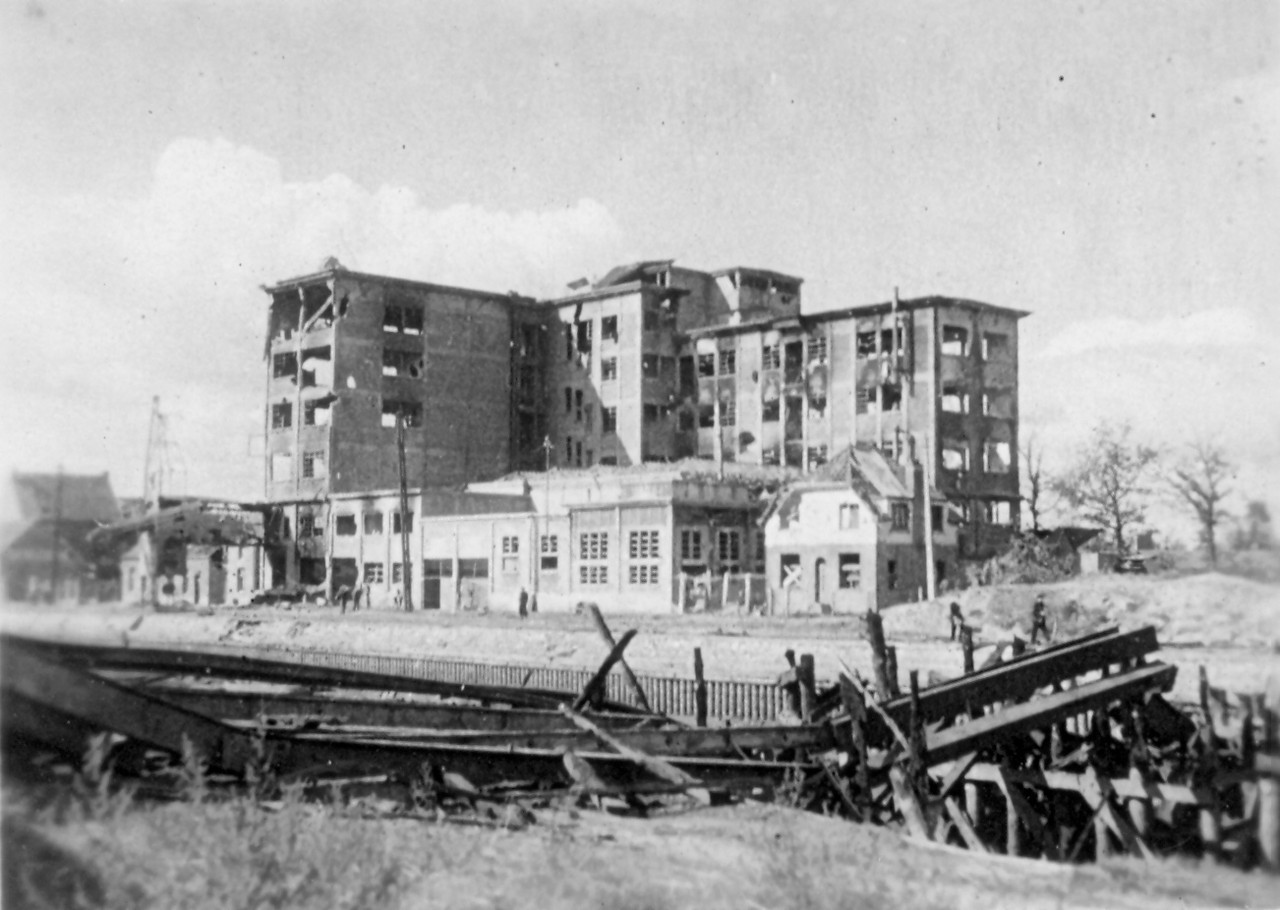Britons liberated Mol on September 13 1944. Nearby, every crossing on the Bocholt-Herentals Canal was fought over. Several attempts by the Allies to cross at the sassen failed.
In Mol-Rauw, British tanks and reconnaissance vehicles set out on 16 September, together with a Mol resistance fighter. Without much difficulty, they reached the abandoned De Maat castle. The Germans had blown up the tower before their departure, to prevent it from serving as a lookout post. The bridge over the canal had been destroyed and the Germans on the other side took the scouts under fire. This made a crossing impossible here too.
On 18 September, General von der Heydte and his staff moved into Postel Abbey. At several places in Postel guns were set up. Barns turn into ammunition depots. British artillery bombards the abbey from Sas 3, Bladel and Bergeijk. The abbey is full of refugees; the fathers exceptionally allow them into the fenced-off abbey garden. From 22 to 23 September the Germans leave, on 23 September the Allies arrive. Thanks to this German retreat, the abbey does not become a battlefield.
After the Germans left, the British constructed a temporary bridge at Sas 3. That 'bailey bridge' is still there today and is one of the few intact examples of this feat of engineering ingenuity. British Donald Coleman Bailey designed the bridge in 1940 to support engineer troops in their operations. The bridge is modular and can be built without special tools or cranes, which is particularly practical in war situations.
Tourist information
